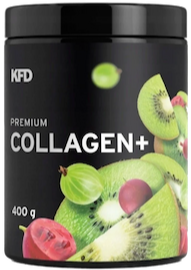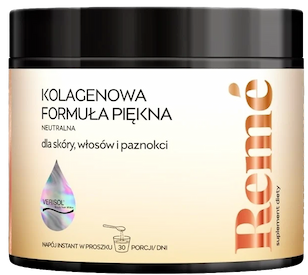Knee pain: on bending, at rest and at night [causes+medications].
Find out what knee pain can result from and how to treat it.


Learn more about our editorial process
.

Learn more about our editorial process
.

Learn more about our editorial process
.

Learn more about our editorial process
.![Knee pain: on bending, at rest and at night [causes+medications].](https://cdn-resources.natu.care/uploads/1/old_patient_close_up_1_6c77040657.jpg)
Why you can trust us
Articles on Natu.Care are written based on scientific research, data from government websites and other reliable sources. The texts are written in cooperation with doctors, nutritionists and other health and beauty experts. Articles are reviewed before publication and during significant updates.
.Learn more about our editorial process
.Information about advertisements
Content on Natu.Care may contain links to products from the sale of which we may receive a commission. When creating content, we adhere to high editorial standards and take care to be objective about the products discussed. The presence of affiliate links is not dictated by our partners, and we select the products we review ourselves completely independently.
.Learn more about our terms and Conditions
.The knee is a modified hinge joint, meaning it can perform movements of extension and flexion and rotation. It is made up of dozens of structures. All it takes is for one of them to get damaged and the knee starts to hurt.
We have places in our body that can be compared to the greatest achievements of engineering and mechanics - these are the joints. They enable us to move in virtually all dimensions: from simple walking and bending to the complex and precise movement sequences of ballet dancers or neurosurgeons.
One of the most important parts of our body is our joints.
One of the most important joints is the knee. And we usually become convinced of this when it starts to hurt.
The knee is one of the most important joints.
From this article you will learn:
- How the knee is built.
- How the knee is built.
- Why the knee can hurt. .
- What knee pain means for a particular area.
- Why the knee hurts.
- Why the knee hurts at rest or when moving. .
- How to treat knee pain. .
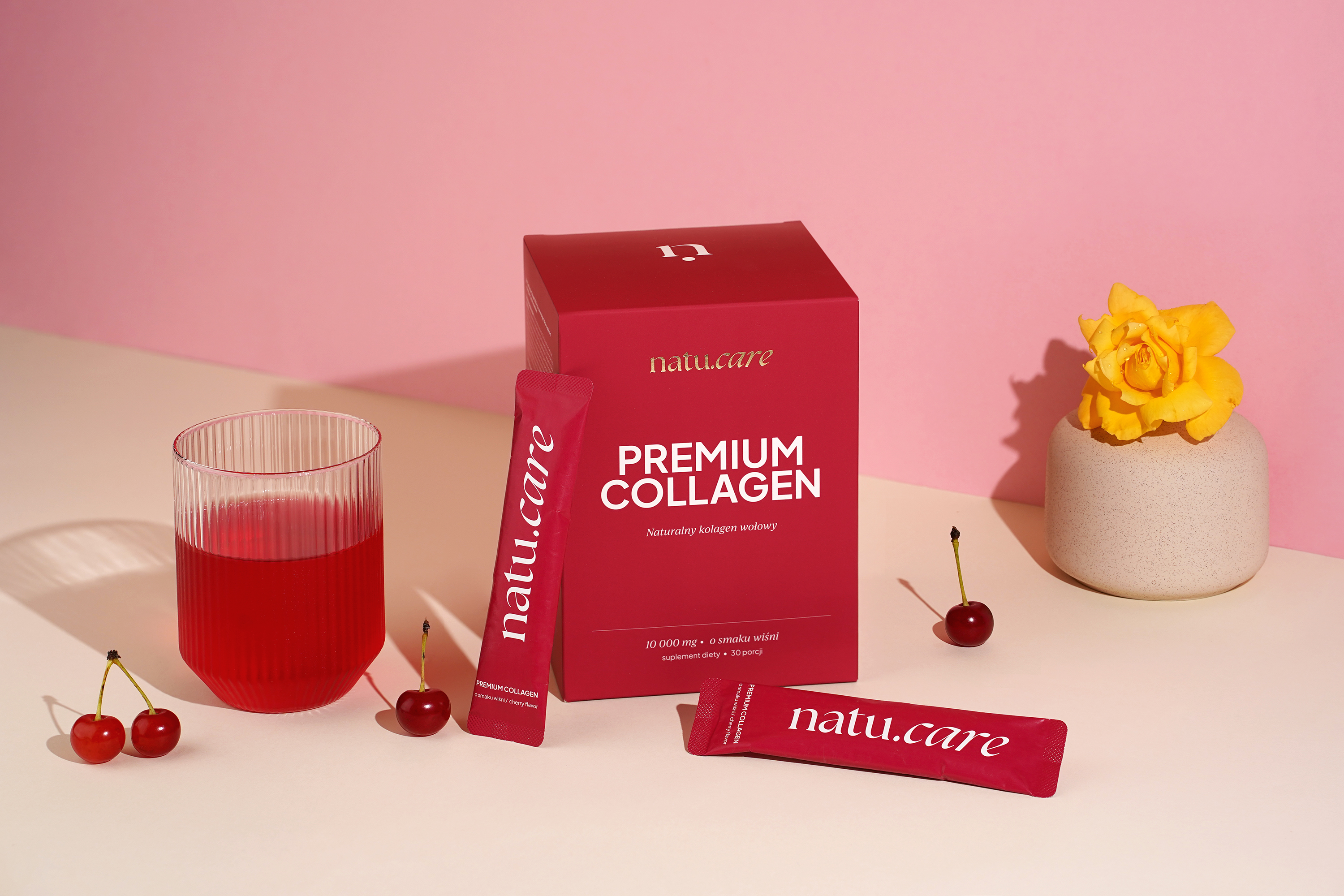
Sprawdź, jak może on zadbać o zdrowie Twoich stawów i urodę! Kolagen Premium (10 000 mg) wiśnia -15% z kodem BLOG15
Natu.Care Kolagen Premium 10000 mg, wiśnia
Natu.Care Kolagen Premium dla zdrowia stawów, skóry, paznokci i włosów. Wołowy kolagen w optymalnej dawce 10 000 mg. Przebadany przez niezależne laboratorium.
Sprawdź cenę
Ten kolagen dobrze się rozpuszcza, super smakuje – jak taki soczek wiśniowy. Moje włosy przestały wypadać, są gęstsze i zdrowsze a cera promienna.@Dominika P.
See also:
.
- What is gonarthrosis
- Home remedies for knee pain
- Knee crunch - causes and treatment
- Tennis elbow
- Golfer's elbow
- Rheumatoid arthritis (RA) .
- Grandmother's ways for joints
- What gives collagen for joints
- What gives collagen for tendons
- What collagen does for bones
Knee joint structure and knee pain
.
Wanting to describe the structure of the knee joint in the simplest possible way, we can say that it is the mobile junction between the femur and the tibia. This junction is secured by a number of ligaments and is further supported from the front by the patella. In turn, the surfaces of the bones at the point of contact are covered with cartilage and joint lubricant, which facilitates movement and prevents frictionand.
.
And getting into the details, there we have: the femoral condyles, the lateral and medial menisci (the real black characters, but about that in a moment), the anterior and posterior cruciate ligaments, the fibular and tibial collateral ligaments, the patella, the patellar ligament... Phew, and that's just the front of the knee! We'd better leave the anatomy to the doctors.
.
I'm sure you know this: the more technically advanced the equipment, the easier it can break down (because it has more parts that can start to fail). It's the same with the knee joint. Disease or damage to any component can result in pain and even make it difficult to function normally. So it is time to look at the causes of degeneration of knee joint structures.
Causes of knee pain
.
Causes of knee pain include trauma (contusions, sprains, ligament tears, bone fractures), inflammation of the joints and synovial bursa, chondromalacia of the patella, osteoarthritis, congenital and acquired postural defects, overloading and even some autoimmune diseases (e.g. RA)and.
.
In young people, the most common causes of knee pain are injuries and strainsand:
.
- knee joint sprain, .
- bruises (with severe ones, fluid may collect in the knee), .
- joint tears and ligament ruptures (the most serious involve the cruciate ligaments), .
- fractures and fractures of the distal end of the femur and tibia, .
- patellofemoral band syndrome (so-called runner's knee), .
- inflammatory conditions of the structures of the knee joint, .
Additionally, knee pain in people at a young age can also be caused by postural defects, e.g. knee scoliosis or valgus.
A common condition in children and teenagers is Osgood-Schlatter syndrome..

Kacper Nihalani doctor
.
The causes of knee pain in people over 50-60 are usually related to disease and degenerationand:
- chondromalisation of the patella, .
- decreased production of synovial fluid, .
- degradation of articular cartilage, .
- degeneration of the knee joint, .
- rheumatic diseases,
- progressive gout, and
- progressive gout, .
As you can see, the causes of knee pain can be many, and in order to accurately determine their origin, it is necessary to visit an orthopaedist. The doctor will take a history with you and perform a manual examination of the knee.
The doctor may also order an examination of the knee.
He may also order additional imaging tests such as an X-ray (radiograph), ultrasound (ultrasound), CT scan or MRI (magnetic resonance imaging). Sometimes he will also refer the patient to see a rheumatologist, who will send the patient for blood tests for rheumatic diseases.
Depending on the cause of your knee pain, your orthopaedic surgeon may later refer you to a physiotherapist with whom you will undergo rehabilitation. This is often a necessary step to permanently and completely cure your painful knee problems.
The following is a good place to start.
Knee pain area
.
One of the key pieces of information for the doctor is where in the knee joint you are experiencing the most pain. It is also worth mentioning that the knee can hurt in many ways. Most patients complain of:
- running knee pain, .
- stretching knee pain, .
- stabbing knee pain, .
- stabbing knee pain, .
What type of pain we are dealing with is also valuable information to help with diagnosis.
Medical practitioner Kacper Nihalani explains what other valuable information is worth telling your doctor:
- Time - when the pain started and whether the discomfort occurred suddenly or progressed over weeks/months/years.
- Prompted by the pain, it is important to know what you are experiencing.
- Radiation - do you experience pain in one area or does it radiate to other parts of your body.
- Pain-related symptoms - e.g. loss of sensation and whether there are any factors that make the pain more or less intense (e.g. cold weather or certain leg movements).
- Changes in pain in relation to the time of day - e.g. does the pain always intensify in the evening, or perhaps only in the morning when you get out of bed?
.
- Effect of pain on functioning - it is also important to know how distressing the pain is for the patient, e.g. on a scale of 1-10 (where 1 is an intensity of discomfort that is almost imperceptible and 10 is unimaginable pain).
Front knee pain
.
Pain in the front of the knee is most commonly associated with complaints of the patella. The patella is a movable bone that is the terminal point of attachment of the quadriceps muscle and also the initial point of attachment of the patellar ligament. On its sides, its movement is stabilised by structures known affectionately as trocarsand.
.
A mechanical imbalance between these four adhesions usually leads to anteriorly located knee pain. The most common type of this disorder is lateralization of the patellaand.
Another disorder associated with the patella is patellar bursitis. It manifests as a collection of fluid at the front of the knee just above the patella. It is often the result of prolonged standing on the knees, so people who are involved in activities such as laying flooringand can suffer from it.
.
Back knee pain
.
Back knee pain is most often due to three main causes :
- injury to the posterior horn of the lateral or medial meniscus, .
- Baker's cyst, .
- injury to the biceps femoris or popliteus muscles, .
Muscle and meniscus injuries most commonly occur as a result of trauma, whereas a Baker's cyst forms spontaneously.
Lateral knee pain
.
Knee pain located on the side of the knee can have extra- or intra-articular causes. This means that both joint-forming and periarticular structures (i.e. muscles, for example) can be degraded - and these usually heal much betterand.
But to determine exactly which condition you are dealing with, you need to check whether your knee hurts on the inside or outside.
.
Knee pain on the inside
.
Specialists say this is the most common type of knee pain. In old age, this pain can be related to the progressive process of gonarthrosis (a difficult word, and it simply means degeneration), which is what primarily affects the inside of the knee. This is due to the fact that the knees are slightly staggered (and this is their correct position, not a defect), i.e. positioned gently outwardsand.
This positioning results in increased pressure on the internal structures of the knee joint. The cartilage in this area wears down more quickly and can cause pain and discomfort when moving .
The same reason is behind the faster wear medial meniscus, but pain from it is most often related to injury, as it gets injured much more often than its lateral colleague. Such injuries are very common in skiers.
.
External knee pain
.
A common cause of pain on the outside of the knee is inflammation of the patellofemoral band. A ganglion can also form on the side of the knee. When this happens, in addition to pain, a small thickening can be seen and felt, which often enlarges after exerciseand.
Although a ganglion is harmless (nothing to do with cancerous lesions), it can be very bothersome and cause discomfort, putting pressure on the tissues .
.
One of the causes of pain on the outside of the knee is also an injury to the lateral meniscus. This can occur when you violently twist your bent knee . If you're thinking about skiers again, you're right. The meniscus does not like the sport.
Knee pain at rest
.
Another important piece of information for an orthopaedic surgeon is when you feel pain and whether it depends on movement or exercise. Most often the knees hurt when walking, running, climbing stairs or squatting or kneeling. However, there are also times when you may feel pain at rest, such as lying down or sitting.
.
Knee pain at night
.
Resting knee pain (i.e. the kind that can torment you at night when you are lying quietly under the duvet), can be caused by three reasonsand:
- arthritic changes (usually in older people), .
- swelling of the knee joint (post-traumatic or associated with rheumatic diseases), .
- bone tumours, .
Well, the internet has spoken: it's cancer! All orthopaedists do facepalm. So let me clarify straight away: rest assured, primary bone tumours are really rare - they account for just 0.2% of all malignant tumours and mainly affect people under 20 and over 70and.
Knee pain when sitting
.
When it comes to knee pain with sitting, it will have exactly the same causes as described in the previous section. Sitting is a lack of movement and therefore rest, so...see above.
.
The only difference is if the pain occurs, for example, when getting up from a chair. In that case it could indicate either patella or meniscus problemsand.
Knee pain when bending and walking
.
If your knee hurts when bending and walking, the already well-known meniscus and patella become the main suspects. Meniscus problems are characterised by the fact that the greater the flexion, the more severe the pain. In extreme cases, meniscus damage can even prevent you from straightening your legand. Ouch.
Knee pain after running and cycling
.
Knee pain after running and cycling can have exactly the same causes as described above - relating to discomfort when bending.
.
Additionally, they can also be related to overloading of the knee joint (especially in runners). Excessive fatigue of the knee often ends in inflammation.
It is also worth mentioning at this point injuries, which are the most common cause of pain knee in young, physically active people. What happens most often during uncontrollable falls, trips and impacts?
.
- Bone fractures and breaks.
- Bone fractures.
- Fracture of ligaments.
- Damage to ligaments.
- Damage to the (notorious) meniscus.
- Damage to the meniscus.
Knee joint injuries can occur, for example, during a sudden change of direction in running, an attempt to brake suddenly and a loss of balance, which often results in a fall.
The knee joint can be injured in the following ways.
Surgent knee pain without injury
.
Sudden knee pain that is not related to an injury means that the cause must have developed previously. Such pain may be related to overload, developing inflammation or degenerative changes.
How to treat knee pain?
.
Treatment methods for knee pain are almost as numerous as its possible causes. The most common are drugs with analgesic and anti-inflammatory effects (oral or in ointment form), various types of injections and physiotherapy. In some cases, surgeryand may also be necessary.
Knee injury treatment
.
The range of options here is really wide: if the injury ends in a bruise and a little swelling, a simple ice pack and ibuprofen may be all that is needed. At the other extreme is the operating table - when there has been a rupture of ligaments or a complex fracture.
Between these extreme options is standard orthopaedic management, i.e. pharmacotherapy with second-generation NSAIDs (those gentler on the stomach) and physiotherapyand.
.
Physiotherapist we mainly associate with a person who selects and shows us how to do the right exercises or, possibly, performs a therapeutic massage. However, it is worth knowing that this field of science contains much more - it is a great variety of treatments to improve health.
Treatment of health conditions
Knee inflammation treatment
.
Inflammation in the knee is treated as standard by using oral anti-inflammatory drugs, such as those based on nimesulide, diclofenac and ibuprofen. If such therapy does not work, steroids can be included on an ad hoc basis, which are usually administered by injectionand.
Knee osteoarthritis treatment
.
How knee osteoarthritis is treated depends on the progression of tissue degeneration. With severely damaged joint surfaces, it may be necessary to implant a knee replacementand.
Otherwise, physiotherapy is used, aimed at strengthening the quadriceps muscle of the thigh, relaxing the muscles and fascia and reducing pain. Cryotherapy and iontophoresisand.
have had good results here.
Some patients may also benefit from injections of hyaluronic acid, which moisturises joint surfaces and reduces frictionand.
Treatment of rheumatic diseases
.
This is where the issue becomes more complicated. Rheumatic diseases are categorised as autoimmune disorders, i.e. disorders in which the patient's immune system acts in an abnormal way - attacking the patient's body.
Treatment of these diseases is a very complex matter.
Treatment of these diseases is aimed at quieting the immune response. Immunosuppressive drugs are used for this purpose, for example methotrexate, which is often used in the treatment of rheumatoid arthritis (RA)and.
Treatment is also possible.
Biological treatment is also possible, but it is not yet reimbursed in Poland for patients with rheumatic diseases. Free access to it is only available to those covered by clinical trial programmes, for which it is not easy to qualify.
Collagen for knee pain
.
Collagen is a protein present in our bodies that plays a key role in maintaining healthy joints. Its supplementation can help relieve knee pain in both physically active people and those suffering from arthritisand.
When you are active, your joints are under constant pressure. Collagen helps to produce joint lubricant and rebuild cartilage, which in turn increases its flexibility and ability to cushion. As a result, it can reduce the discomfort and pain that often accompanies intense workoutsand.
Collagen for the active
.A 2021 study showed that collagen peptide supplementation in young, physically active individuals, reduced knee joint pain .
If you suffer from arthritis, collagen may also help. Studies show that collagen supplementation can slow the progression of this disease by promoting the production of new cartilage. As a result, this may help to reduce pain and improve mobilityand.
Collagen for arthritis
.The 2023 study tested the effects of supplementation collagen peptides in knee osteoarthritis. Participants were divided into two groups, one of which received collagen and the other placebo. The results suggest that in the group taking the youth protein, pain was reduced by 68%and.
Therefore, if you are struggling with knee pain, it is worth considering collagen supplementation. Choose a high quality product with a pure formulation and an effective dose (at least 2.5g per day, and ideally 5-10g per daily serving) and a well-absorbed formula collagen hydrolysate.
Natu.Care Collagen Premium 5000 mg, mango-maracuja
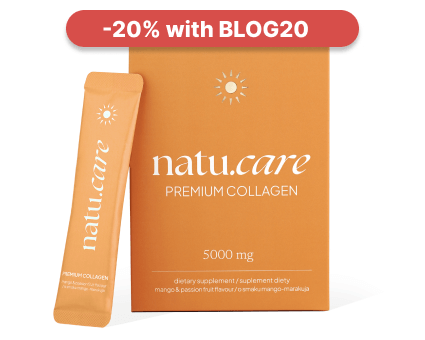
- Collagen content: 5000 mg marine collagen hydrolysate
- .
- Additional active ingredients: vitamin C, low molecular weight hyaluronic acid (and L-theanine and coenzyme Q10 in cocoa flavoured collagen or vitamin A and vitamin E in mango–passion fruit flavoured collagen)
- .
- Form: powder sachets
- .
- Dose: 1 sachet per day
- .
- Sufficient for: 30 days
- .
Product description
Fish collagen from the Natu.Care brand in a dose of 5000 mg. The formula contains a sufficient portion of the active substance to positively affect your joints, musculoskeletal system and immunity.
Take care of your tendons, joint cartilage, ligaments, muscles and even bones by supplying them with the building blocks to function properly. Move without bólu and provide the necessary support for any physical activity.
And as a „gratis” to regular supplementation, you will also receive firm skinóhand, healthy and shiny hair and strong nails.
Natu.Care Premium Collagen is available in two flavours – Cacao Bloom and Rise&Shine. Both formulas are based on the following active ingredients: marine collagen hydrolysate, wild roseóbud extract and hyaluronic acid.
Additionally, Cacao Bloom contains natural L-theanine, coenzyme Q10 and defatted Dutch cacao. Rise&Shine instead contains vitamin E and vitamin A.
These are the best collagens in the world.
These best fish collagens on the market also rós taste – Cacao Bloom is a treat for chocolate lovers. Rise&Shine will appeal to those whoóenjoy the refreshing taste of mangoófruit and passion fruit.
Pros and cons
Fish collagen from the Natu.Care brand in a dose of 5000 mg. The formula contains a sufficient portion of the active substance to positively affect your joints, musculoskeletal system and immunity.
Take care of your tendons, joint cartilage, ligaments, muscles and even bones by supplying them with the building blocks to function properly. Move without bólu and provide the necessary support for any physical activity.
And as a „gratis” to regular supplementation, you will also receive firm skinóhand, healthy and shiny hair and strong nails.
Natu.Care Premium Collagen is available in two flavours – Cacao Bloom and Rise&Shine. Both formulas are based on the following active ingredients: marine collagen hydrolysate, wild roseóbud extract and hyaluronic acid.
Additionally, Cacao Bloom contains natural L-theanine, coenzyme Q10 and defatted Dutch cacao. Rise&Shine instead contains vitamin E and vitamin A.
These are the best collagens in the world.
These best fish collagens on the market also rós taste – Cacao Bloom is a treat for chocolate lovers. Rise&Shine will appeal to those whoóenjoy the refreshing taste of mangoófruit and passion fruit.
Additional information
Fish collagen from the Natu.Care brand in a dose of 5000 mg. The formula contains a sufficient portion of the active substance to positively affect your joints, musculoskeletal system and immunity.
Take care of your tendons, joint cartilage, ligaments, muscles and even bones by supplying them with the building blocks to function properly. Move without bólu and provide the necessary support for any physical activity.
And as a „gratis” to regular supplementation, you will also receive firm skinóhand, healthy and shiny hair and strong nails.
Natu.Care Premium Collagen is available in two flavours – Cacao Bloom and Rise&Shine. Both formulas are based on the following active ingredients: marine collagen hydrolysate, wild roseóbud extract and hyaluronic acid.
Additionally, Cacao Bloom contains natural L-theanine, coenzyme Q10 and defatted Dutch cacao. Rise&Shine instead contains vitamin E and vitamin A.
These are the best collagens in the world.
These best fish collagens on the market also rós taste – Cacao Bloom is a treat for chocolate lovers. Rise&Shine will appeal to those whoóenjoy the refreshing taste of mangoófruit and passion fruit.
User review
Fish collagen from the Natu.Care brand in a dose of 5000 mg. The formula contains a sufficient portion of the active substance to positively affect your joints, musculoskeletal system and immunity.
Take care of your tendons, joint cartilage, ligaments, muscles and even bones by supplying them with the building blocks to function properly. Move without bólu and provide the necessary support for any physical activity.
And as a „gratis” to regular supplementation, you will also receive firm skinóhand, healthy and shiny hair and strong nails.
Natu.Care Premium Collagen is available in two flavours – Cacao Bloom and Rise&Shine. Both formulas are based on the following active ingredients: marine collagen hydrolysate, wild roseóbud extract and hyaluronic acid.
Additionally, Cacao Bloom contains natural L-theanine, coenzyme Q10 and defatted Dutch cacao. Rise&Shine instead contains vitamin E and vitamin A.
These are the best collagens in the world.
These best fish collagens on the market also rós taste – Cacao Bloom is a treat for chocolate lovers. Rise&Shine will appeal to those whoóenjoy the refreshing taste of mangoófruit and passion fruit.
Natu.Care Collagen Premium 10000 mg, cherry
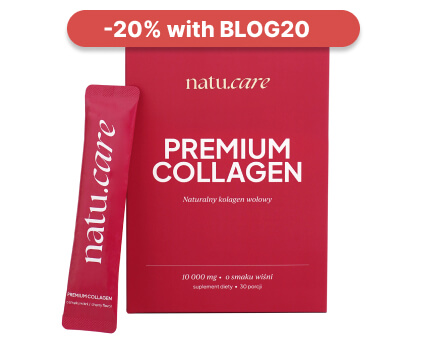
- Collagen content: 10,000 mg of hydrolyzed bovine collagen
- Additional active ingredients: vitamin C, low molecular weight hyaluronic acid, glucosamine, chondroitin, extract of Indian frankincense resin (boswellia serrata)
- Form: powder sachets for drinking
- Serving: 1 sachet per day
- Lasts for: 30 days
Product description
One of the strongest collagens on the market, providing as much as 10,000 mg per daily serving. This product can effectively support the condition of joints, skin, hair, and nails.
With this supplement, you will support your skeletal and joint system as well as your beauty, helping you visually halt the aging process and feel rejuvenated!
Pros and cons
Pros:
- The daily portion of collagen is very large – as much as 10,000 mg.
- Proven collagen formula – COLLinstant, whose effectiveness has been confirmed in clinical studies.
- Effective dose of hyaluronic acid, which additionally moisturizes the skin and positively affects joint health.
- Vitamin C supports the body's natural collagen production.
- Glucosamine is a fundamental building block of compounds found in joint cartilage and a component of collagen that gives elasticity to connective tissue in tendons.
- Chondroitin is a natural component found in the human body, mainly in cartilage. This large molecule (mucopolysaccharide) has the ability to absorb water, which helps maintain the elasticity and resilience of cartilage.
- Frankincense resin extract supports blood circulation and joint mobility and reduces their stiffness. It may help alleviate inflammatory conditions.
- The composition has been tested by the independent and accredited J.S. Hamilton laboratory.
Cons:
- None.
Additional information
Users praise Natu.Care Collagen Premium for the easy dissolving of the powder.
ALLDEYNN Collarose Fish
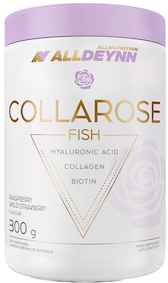
- Collagen content: 5000 mg hydrolysate fish collagen VERISOL F® .
- Additional active ingredients: vitamin C, hyaluronic acid, biotin
- Form: powder to dissolve in water .
- Dose: one scoop (6 g) of powder daily .
- Sufficient for: 50 days .
Product description
Atlantic cod collagen VERISOL F® contained in the formula are easily absorbed collagen peptides of fish origin. Regular supplementation can firm your skinóhand and slow down the ageing process. Your nails will become stronger and stop breaking. The addition of biotin will improve the condition of your hairów. The collagen portion is high enough to also have a good effect on your joints, muscles and bones.
Pros and cons
Atlantic cod collagen VERISOL F® contained in the formula are easily absorbed collagen peptides of fish origin. Regular supplementation can firm your skinóhand and slow down the ageing process. Your nails will become stronger and stop breaking. The addition of biotin will improve the condition of your hairów. The collagen portion is high enough to also have a good effect on your joints, muscles and bones.
Additional information
Atlantic cod collagen VERISOL F® contained in the formula are easily absorbed collagen peptides of fish origin. Regular supplementation can firm your skinóhand and slow down the ageing process. Your nails will become stronger and stop breaking. The addition of biotin will improve the condition of your hairów. The collagen portion is high enough to also have a good effect on your joints, muscles and bones.
Expert and user opinion
Atlantic cod collagen VERISOL F® contained in the formula are easily absorbed collagen peptides of fish origin. Regular supplementation can firm your skinóhand and slow down the ageing process. Your nails will become stronger and stop breaking. The addition of biotin will improve the condition of your hairów. The collagen portion is high enough to also have a good effect on your joints, muscles and bones.
DuoLife Collagen fish collagen 2500 mg
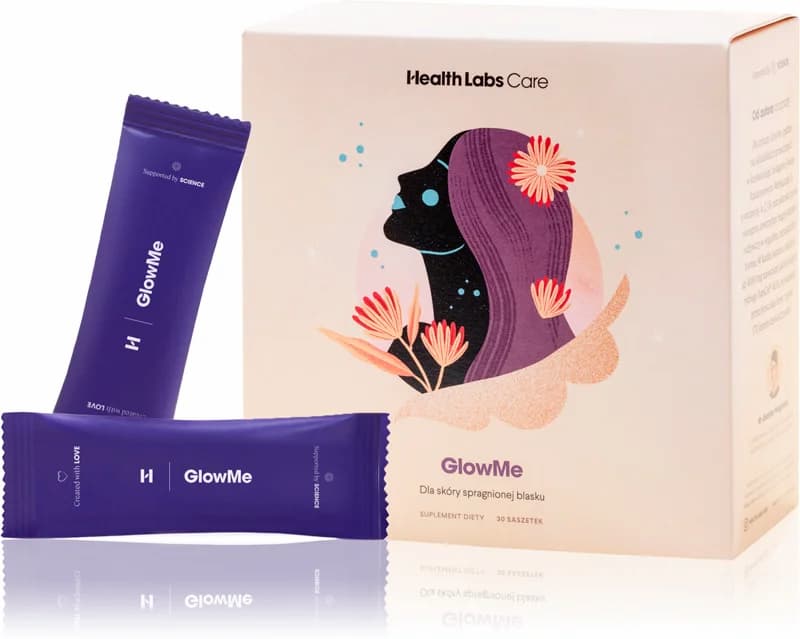
- Collagen content: 2500 mg collagen
- Additional active ingredients: vitamin C, silicon, glucosamine, hyaluronic acid, nettle and bamboo extracts
- Form: liquid to drink .
- Dose:25 ml .
- Sufficient for: 30 days .
Product description
100% natural collagen liquid without unnecessary ingredientsós. The composition of ingredientsós improves the appearance and condition of skinóry, hairów, nails. DuoLife is a good choiceór if you notice the first signs of skinóry ageing or want to stop this process. A tasty liquid, convenient to use.
Pros and cons
100% natural collagen liquid without unnecessary ingredientsós. The composition of ingredientsós improves the appearance and condition of skinóry, hairów, nails. DuoLife is a good choiceór if you notice the first signs of skinóry ageing or want to stop this process. A tasty liquid, convenient to use.
Additional information
100% natural collagen liquid without unnecessary ingredientsós. The composition of ingredientsós improves the appearance and condition of skinóry, hairów, nails. DuoLife is a good choiceór if you notice the first signs of skinóry ageing or want to stop this process. A tasty liquid, convenient to use.
User review
100% natural collagen liquid without unnecessary ingredientsós. The composition of ingredientsós improves the appearance and condition of skinóry, hairów, nails. DuoLife is a good choiceór if you notice the first signs of skinóry ageing or want to stop this process. A tasty liquid, convenient to use.
Pharmovit liquid collagen 10000 mg
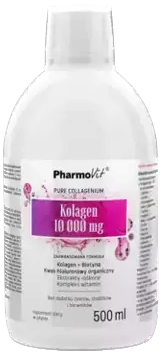
- Collagen content: 10000 mg hydrolysed bovine collagen types I and III .
- Additional active ingredients: hyaluronic acid, natural plant extracts, vitamin C, B vitamins, zinc, vitamin D
- Form: vials .
- Dose: 25 ml .
- Sufficient for: 20 days .
Product description
A solid daily dose of collagen for jointómuscle and bone health and beauty. The duo of collagen and vitamin C has a positive effect on each other, so that „the protein of youth” is better absorbed and more efficiently produced in the body.
Pros and cons
A solid daily dose of collagen for jointómuscle and bone health and beauty. The duo of collagen and vitamin C has a positive effect on each other, so that „the protein of youth” is better absorbed and more efficiently produced in the body.
Additional information
A solid daily dose of collagen for jointómuscle and bone health and beauty. The duo of collagen and vitamin C has a positive effect on each other, so that „the protein of youth” is better absorbed and more efficiently produced in the body.
KFD Premium Collagen+
Product description
High dose of collagen and a real bomb of vitamins C and D and organic sulphur. With this preparation the effects will come immediately. You will improve the firmness of your skin and reduce wrinkles. Your hair and nails will be strong and shiny.
A generous dose of collagen will improve the mobility of your jointsós, benefit your bone system and muscles. Do you do sports and need a product thatós able to keep up with your needs? This product will do the trick.
Pros and cons
High dose of collagen and a real bomb of vitamins C and D and organic sulphur. With this preparation the effects will come immediately. You will improve the firmness of your skin and reduce wrinkles. Your hair and nails will be strong and shiny.
A generous dose of collagen will improve the mobility of your jointsós, benefit your bone system and muscles. Do you do sports and need a product thatós able to keep up with your needs? This product will do the trick.
Additional information
High dose of collagen and a real bomb of vitamins C and D and organic sulphur. With this preparation the effects will come immediately. You will improve the firmness of your skin and reduce wrinkles. Your hair and nails will be strong and shiny.
A generous dose of collagen will improve the mobility of your jointsós, benefit your bone system and muscles. Do you do sports and need a product thatós able to keep up with your needs? This product will do the trick.
Expert opinion
High dose of collagen and a real bomb of vitamins C and D and organic sulphur. With this preparation the effects will come immediately. You will improve the firmness of your skin and reduce wrinkles. Your hair and nails will be strong and shiny.
A generous dose of collagen will improve the mobility of your jointsós, benefit your bone system and muscles. Do you do sports and need a product thatós able to keep up with your needs? This product will do the trick.
Product description
The dietary supplement from Remé contains beef collagen in a patented formula and vitamin C, whichóra aids its absorption. The formula comes in three flavours: neutral, orange-maracuja and strawberry-pomegranate. The formula can effectively support and improve the condition of the skinóry, hairóry and nails.
Pros and cons
The dietary supplement from Remé contains beef collagen in a patented formula and vitamin C, whichóra aids its absorption. The formula comes in three flavours: neutral, orange-maracuja and strawberry-pomegranate. The formula can effectively support and improve the condition of the skinóry, hairóry and nails.
Additional information
The dietary supplement from Remé contains beef collagen in a patented formula and vitamin C, whichóra aids its absorption. The formula comes in three flavours: neutral, orange-maracuja and strawberry-pomegranate. The formula can effectively support and improve the condition of the skinóry, hairóry and nails.
The dietary supplement from Remé contains beef collagen in a patented formula and vitamin C, whichóra aids its absorption. The formula comes in three flavours: neutral, orange-maracuja and strawberry-pomegranate. The formula can effectively support and improve the condition of the skinóry, hairóry and nails.
Exercises for knee pain
.
Did you know that strengthening one muscle can save you from most knee problems? I know, it sounds like the title of an article from a website with a not very good reputation. But... the orthopaedists will hate you if you do these exercises! Well, jokes aside.
.
In fact, the orthopaedists will be thrilled if you work on strengthening the quadriceps muscle of the thigh. And quite seriously - it will make you forget about orthopaedic knee problems.
Strong quadriceps thigh muscle isand:
- relieving stress on the ligaments of the knee joint, .
- providing improved knee stability, .
- keeping the kneecap in the correct position, .
- improving cushioning of the joint, .
Did you know
.Exercising the quadriceps muscle of the thigh is the only effective treatment for patellar lateralisation apart from surgery.
How to exercise the quadriceps muscle? If you enjoy cycling, place the saddle in such a position that full extension of the leg occurs during pedalling. And swim on two wheels for at least 3 hours a week.
And if you don't like cycling or it just happens to be winter, ice and snow, I have an equally good alternative for you using weights:
Place weights on your legs. Sit so that your knees are bent at 90°. Slowly straighten and bend your legs. Try to keep the movement smooth and active. You can do this exercise once with one leg and once with the other, but if you lift and lower both limbs together - it will exercise your abdominal muscles too.
Morale: never let go of leg day...
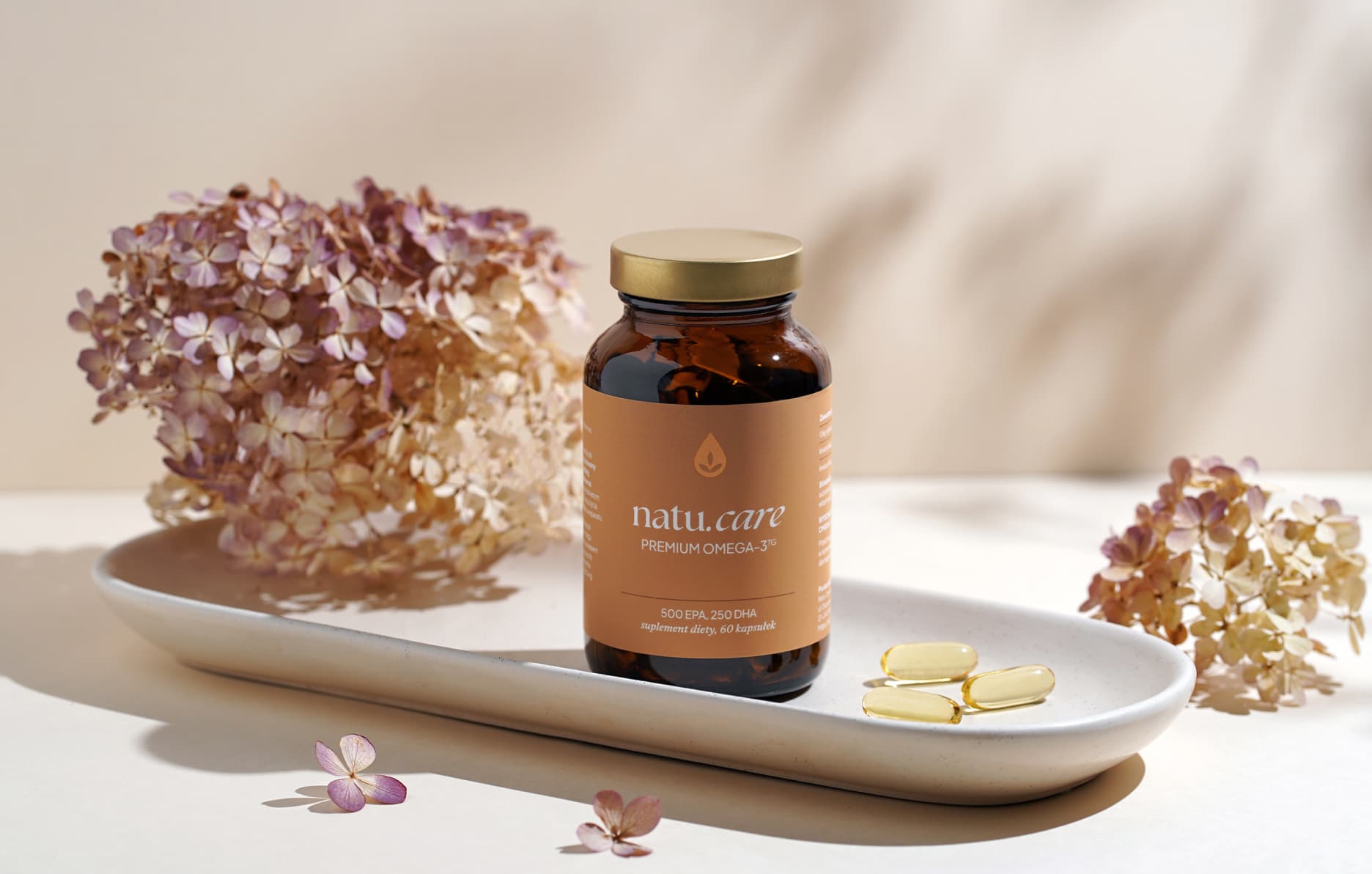
Sprawdź, za co pokochały go tysiące klientek Natu.Care Premium Omega-3ᵀᴳ -15% z kodem BLOG15
Natu.Care Omega-3ᵀᴳ Premium
Natu.Care Omega-3ᵀᴳ Premium dla zdrowia serca, mózgu i odporności. Najlepsza przyswajalność. Optymalna dawka 750 mg. Przebadana przez niezależne laboratorium.
Zobacz więcej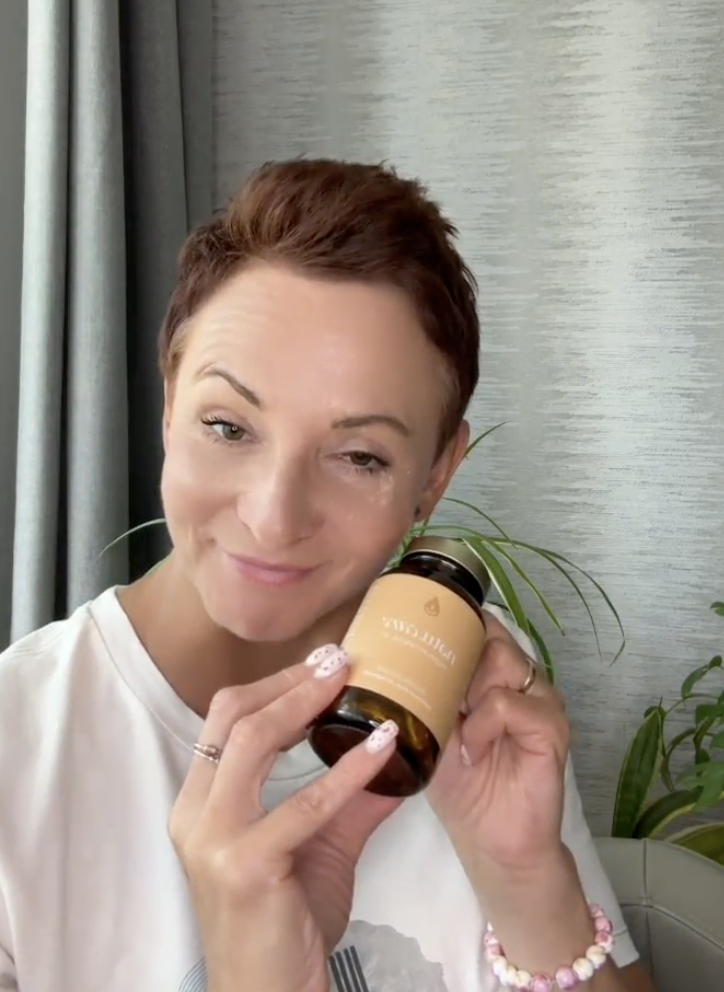
Produkt ma super skład, transparentną etykietę i co dla mnie jest ważne – małe kapsułki do połknięcia. Nie ma też nieprzyjemnego efektu odbijania rybą, który miałam spożywając inne produkty. Widzę znaczną poprawę odporności. Polecam!@Kasia P.
Summary
.- The knee joint is the junction of the femur and tibia, stabilised by ligaments. .
- Knee pain can have many causes: from trauma to degenerative changes to systemic diseases.
- Knee pain can have many causes.
- In young people, knee pain is most often caused by injury, in older people by degeneration of the knee joint. .
- The most important features of knee pain that will facilitate diagnosis are where it is felt and whether the pain occurs during movement or at rest. .
- Treatment of knee pain depends on the cause, but orthopaedics has a range of options: pharmacotherapy, physiotherapy, injections and surgery including the implantation of a knee replacement.
- The best exercises for knee pain are those that strengthen the quadriceps muscle of the thigh - cycling or leg extensions with weight. .
FAQ
.Which doctor treats knee pain?
.With a sore knee go to an orthopaedist, a specialist in the musculoskeletal system. An orthopaedic surgeon diagnoses and treats knee pain, which can result from a variety of causes, such as injury, osteoarthritis or inflammation.
When knee pain is suspected to be related to rheumatic diseases, the orthopaedic surgeon may refer you to a rheumatologist for further treatment.
What to use for knee pain?
.First of all, see an orthopaedic surgeon who will assess the condition of your knee and recommend appropriate treatment. Take the medication he prescribes and follow the instructions. You can also apply warm or cold compresses to reduce the pain.
.If the pain is severe, use aids such as a cane, crutches or a stabiliser to further relieve pressure on the knee joint.
When not contraindicated, practice regular physiotherapy exercises to help strengthen muscles and improve joint mobility. Using these strategies will help you manage pain and improve knee function.
How long does pain last after a knee replacement?
.Pain after knee replacement usually lasts from a few weeks to about 3 months. The pain is most intense in the first few weeks after surgery, but should gradually subside over time.
Use pain medication as prescribed by your doctor. Do regular rehabilitation exercises to help with recovery and return to full function. For example, exercises to strengthen the quadriceps muscles of the thigh can reduce pain and improve knee function.
Regularly, you may be able to do exercises to strengthen the quadriceps muscles of the thigh.
If the operation went smoothly, the post-operative pain is moderate, the follow-up X-ray is normal, there are no complications and the physiotherapists see no obstacles - the patient should be able to walk independently. Of course, this walking will not be fully 'normal' immediately, but will improve with time.
A strained knee - what to do?
.Start by limiting the physical activity that may have caused the strain. Apply cold compresses to the knee for 15 minutes every 2-3 hours for the first 1-2 days. This will reduce the swelling. Take painkillers such as ibuprofen to relieve pain and reduce inflammation.
When the pain and swelling have subsided, start muscle-strengthening exercises such as seated leg straightening with a weight. A consultation with a physiotherapist can also be helpful to get a personalised exercise plan, tailored to your needs.
You can also support yourself with a knee stabiliser while you return to normal activity. Such braces can provide additional support and stabilisation for the knee joint. But be warned: it's best to talk to your doctor or physiotherapist before using such a solution.
The following is a guide to the use of a brace.
The issue of knee strain is a serious one, as ignoring this problem can lead to long-term damage to the joint. If the pain persists - be sure to see an orthopaedic surgeon.
Knee strain is a serious issue as it can lead to long-term damage to the joint.
Why do knees hurt?
.Knee pain is often the result of excessive strain or trauma. For example, intense exercise, such as long-distance running, can lead to pain due to joint strain. Injuries - sprains or ligament tears - can also cause pain.
In the elderly, knee pain can be caused by degeneration and degeneration of the joints. Autoimmune diseases, such as rheumatoid arthritis, can also lead to knee pain. Gout can also be responsible for knee pain through the deposition of uric acid crystals in the joints.
Each of these causes has specific symptoms and differs in treatment. Therefore, it is important to consult your doctor for a correct diagnosis and to choose the best treatment.
The following is a guide to the treatment of gout.
What does burning in the knee mean?
.Burning in the knee can indicate a variety of health problems, such as arthritis, injury or strain from overexertion. A burning sensation in the knee is a warning sign that should not be ignored.
It may indicate a serious problem that requires immediate medical intervention. Therefore, consult your doctor - this is the first and most important step. A specialist can diagnose the problem with the help of a physical examination and imaging tests.
How to heal an overstressed knee
.To heal an overstressed knee, avoid activities that stress it. This gives the body a chance to heal itself. If swelling has developed, use ice packs: apply ice wrapped in a cloth to the knee for 15-20 minutes every 2-3 hours until you get an improvement. Sitting or lying down in a position where the leg is above the level of the heart will also help to reduce swelling.
When the pain subsides, consider rehabilitation exercises under the guidance of a specialist. These strengthen the muscles and help avoid future injury. On the other hand, if the pain does not go away within 2-3 days, see an orthopaedist.
.
Resources
.See all
.Netter's Atlas of Orthopaedic Anatomy. Thompson, J. C., Netter, F. H. (n.d.). PZWL Medical Bookshop. Retrieved December 7, 2023, from https://pzwl.pl/Atlas-anatomii-ortopedycznej-Nettera,5041703,p.html
Berteau, J.-P. (2022a). Knee Pain from Osteoarthritis: Pathogenesis, Risk Factors, and Recent Evidence on Physical Therapy Interventions. Journal of Clinical Medicine, 11(12), Article 12. https://doi.org/10.3390/jcm11123252
Berteau, J.-P. (2022b). Knee Pain from Osteoarthritis: Pathogenesis, Risk Factors, and Recent Evidence on Physical Therapy Interventions. Journal of Clinical Medicine, 11(12), Article 12. https://doi.org/10.3390/jcm11123252
Brown, G. A. (2021). An Evidence-Based Approach to the Treatment of Knee Osteoarthritis. Journal of Orthopaedic Experience & Innovation, 2(2). https://doi.org/10.60118/001c.29155
Campbell Orthopaedic Surgery Volume 1, S. Terry Canale, James H. Beaty. (n.d.). MediPage Medical Publishing. Retrieved December 7, 2023, from https://medipage.pl/pl/p/Campbell-Ortopedia-Operacyjna-TOM-1%2C-S.-Terry-Canale%2C-James-H.-Beaty/2774
D'Ambrosi, R., Meena, A., Raj, A., Ursino, N., & Hewett, T. E. (2022). Anterior Knee Pain: State of the Art. Sports Medicine - Open, 8(1), 98. https://doi.org/10.1186/s40798-022-00488-x
Duong, V., Oo, W. M., Ding, C., Culvenor, A. G., & Hunter, D. J. (2023). Evaluation and Treatment of Knee Pain: A Review. JAMA, 330(16), 1568-1580. https://doi.org/10.1001/jama.2023.19675
Heidari, B. (2011). Knee osteoarthritis prevalence, risk factors, pathogenesis and features: Part I. Caspian Journal of Internal Medicine, 2(2), 205-212.
Hunter, C. W., Deer, T. R., Jones, M. R., Chien, G. C. C., D'Souza, R. S., Davis, T., Eldon, E. R., Esposito, M. F., Goree, J. H., Hewan-Lowe, L., Maloney, J. A., Mazzola, A. J., Michels, J. S., Layno-Moses, A., Patel, S., Tari, J., Weisbein, J. S., Goulding, K. A., Chhabra, A., ... Strand, N. (2022). Consensus Guidelines on Interventional Therapies for Knee Pain (STEP Guidelines) from the American Society of Pain and Neuroscience. Journal of Pain Research, 15, 2683-2745. https://doi.org/10.2147/JPR.S370469
Knee Pain in Adults and Adolescents: the Initial Evaluation | AAFP. (n.d.). Retrieved December 7, 2023, from https://www.aafp.org/pubs/afp/issues/2018/1101/p576.html
Surgical treatment in osteoarthritis. Schnettler, Steinau. (n.d.). MediPage Medical Publishing. Retrieved December 7, 2023, from https://medipage.pl/pl/p/Leczenie-chirurgiczne-w-zapaleniach-kosci-i-stawow.-Schnettler%2C-Steinau/1991
Lin, C.-R., Tsai, S. H. L., Huang, K.-Y., Tsai, P.-A., Chou, H., & Chang, S.-H. (2023). Analgesic efficacy of collagen peptide in knee osteoarthritis: A meta-analysis of randomized controlled trials. Journal of Orthopaedic Surgery and Research, 18(1), 694. https://doi.org/10.1186/s13018-023-04182-w
Nonsurgical Management of Knee Pain in Adults | AAFP. (n.d.). Retrieved December 7, 2023, from https://www.aafp.org/pubs/afp/issues/2015/1115/p875.html
Orthopaedics and Traumatology Volume 1-2. Gaździk, T. Sz. (n.d.). PZWL Medical Bookshop. Retrieved December 7, 2023, from https://pzwl.pl/Ortopedia-i-traumatologia-Tom-1-2,4964653,p.html
Parker, D. A., Scholes, C., & Neri, T. (2018). Non-operative treatment options for knee osteoarthritis: Current concepts. Journal of ISAKOS, 3(5), 274-281. https://doi.org/10.1136/jisakos-2016-000094
Peat, G., McCarney, R., & Croft, P. (2001). Knee pain and osteoarthritis in older adults: A review of community burden and current use of primary health care. Annals of the Rheumatic Diseases, 60(2), 91-97. https://doi.org/10.1136/ard.60.2.91
Book for doctors specialising in orthopaedics and traumatology of the musculoskeletal system-Andrzej Nowakowski,Łukasz Matuszewski,Marek Synder,Tomasz Mazurek. (n.d.). Retrieved December 7, 2023, from https://www.medicon.pl/podrecznik-dla-doctors-specialising-in-orthopaedics-and-traumatology-motor-access/32341?gad_source=1&gclid=CjwKCAiA98WrBhAYEiwA2WvhOi5tRhqM4RWQnJul5WXDlcJg99iCzfC-CW45kTG0oRxccPpaK3YveRoCqxoQAvD_BwE
Pullan, J. E., & Lotfollahzadeh, S. (2023). Primary Bone Cancer. In StatPearls. StatPearls Publishing. http://www.ncbi.nlm.nih.gov/books/NBK560830/
.Sanchis-Alfonso, V., McConnell, J., Monllau, J. C., & Fulkerson, J. P. (2016). Diagnosis and treatment of anterior knee pain. Journal of ISAKOS, 1(3), 161-173. https://doi.org/10.1136/jisakos-2015-000033
Traumatology of the musculoskeletal system. Sanders, R. (n.d.). PZWL Medical Bookshop. Retrieved December 7, 2023, from https://pzwl.pl/Traumatologia-ukladu-ruchu,4985755,p.html
Uivaraseanu, B., Vesa, C. M., Tit, D. M., Abid, A., Maghiar, O., Maghiar, T. A., Hozan, C., Nechifor, A. C., Behl, T., Patrascu, J. M., & Bungau, S. (2022). Therapeutic approaches in the management of knee osteoarthritis (Review). Experimental and Therapeutic Medicine, 23(5), 1-6. https://doi.org/10.3892/etm.2022.11257
Wang, Y., Teichtahl, A. J., Abram, F., Hussain, S. M., Pelletier, J.-P., Cicuttini, F. M., & Martel-Pelletier, J. (2018). Knee pain as a predictor of structural progression over 4 years: Data from the Osteoarthritis Initiative, a prospective cohort study. Arthritis Research & Therapy, 20(1), 250. https://doi.org/10.1186/s13075-018-1751-4
Zdzieblik, D., Brame, J., Oesser, S., Gollhofer, A., & König, D. (2021). The Influence of Specific Bioactive Collagen Peptides on Knee Joint Discomfort in Young Physically Active Adults: A Randomized Controlled Trial. Nutrients, 13(2), Article 2. https://doi.org/10.3390/nu13020523
.
Editorials
Meet the team


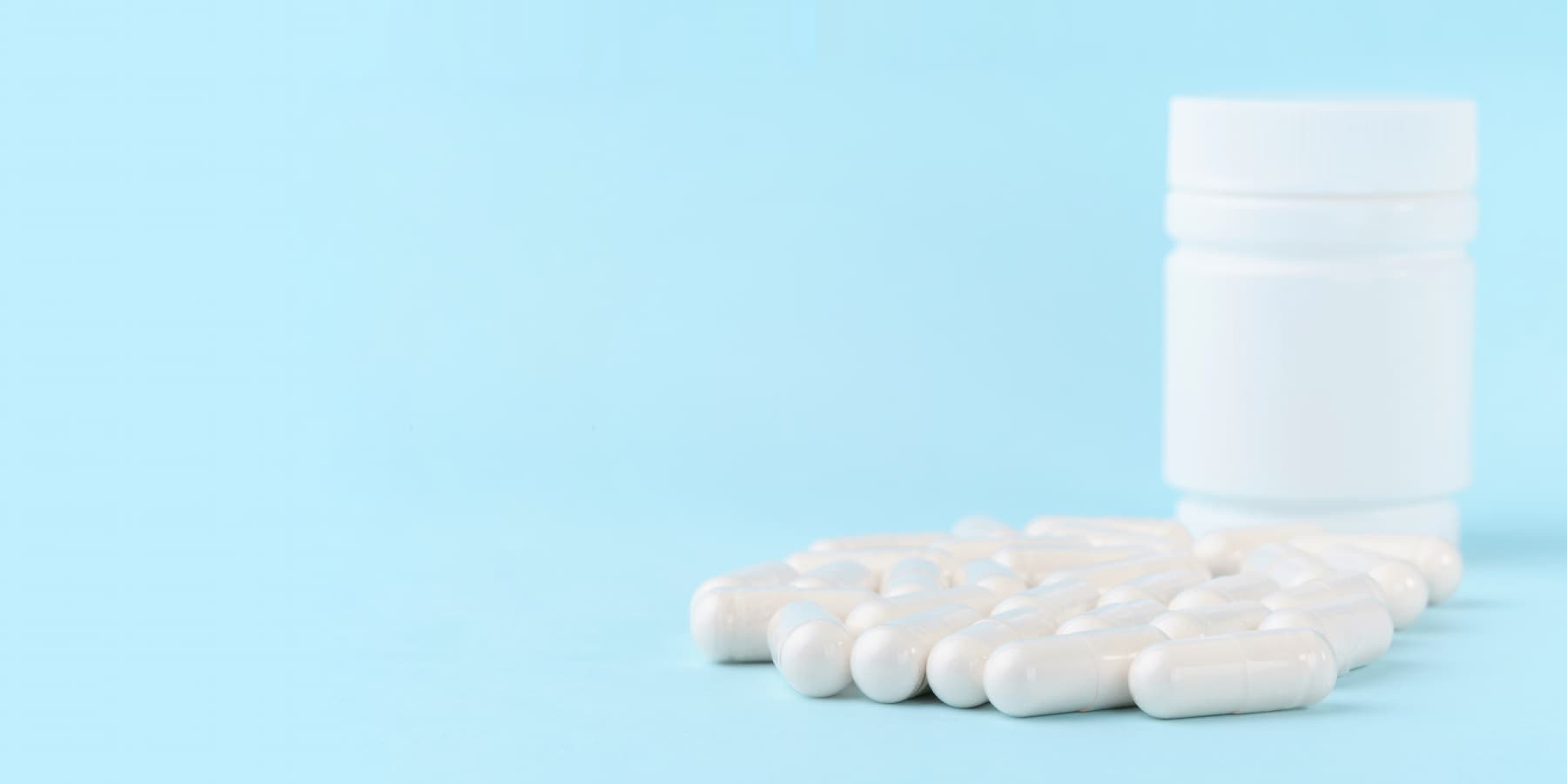
Chondroitin helps the joints and other elements of the body.
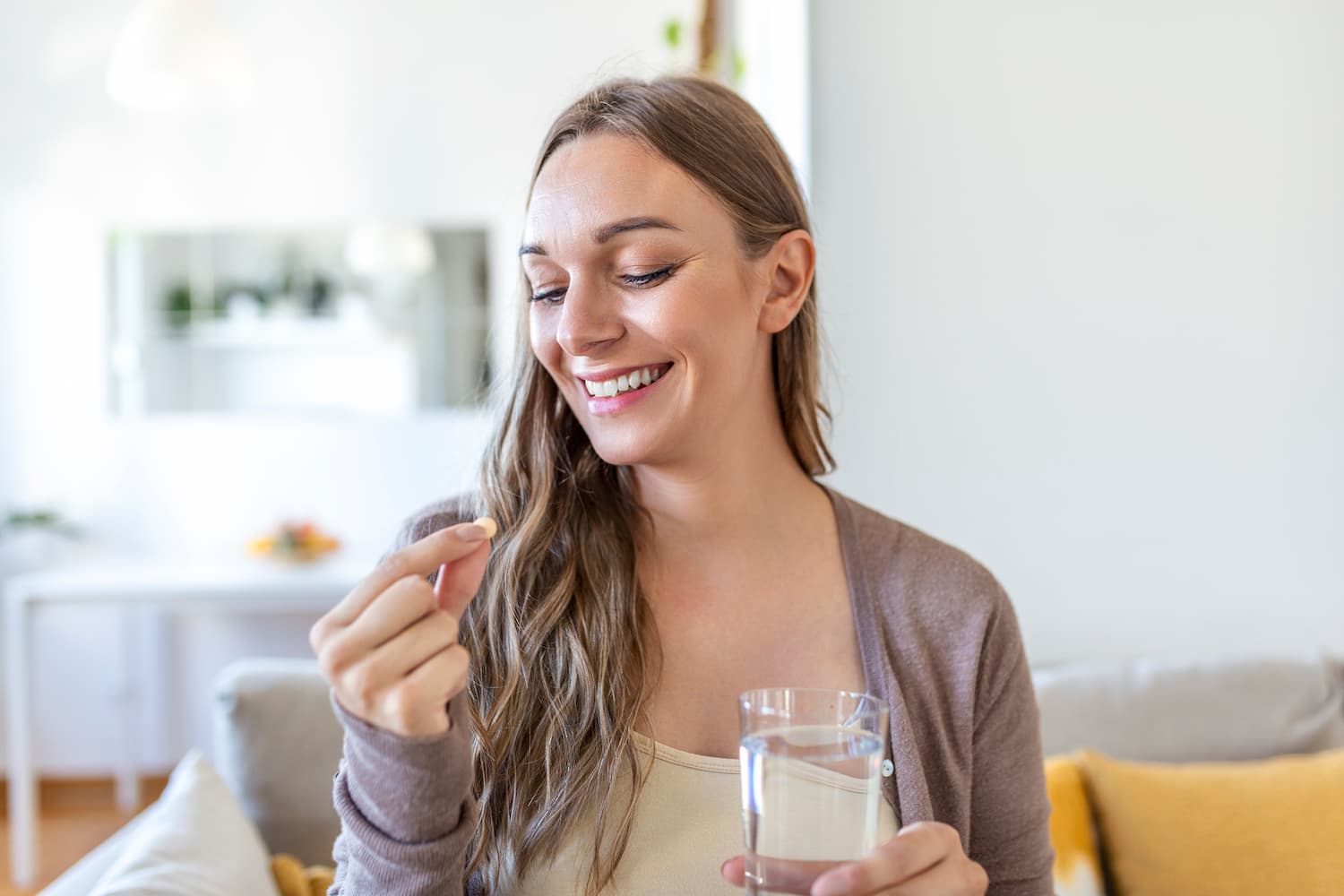
Glutathione is one of the most potent antioxidants for supporting the body's health. Find out how it works and where to get it from.
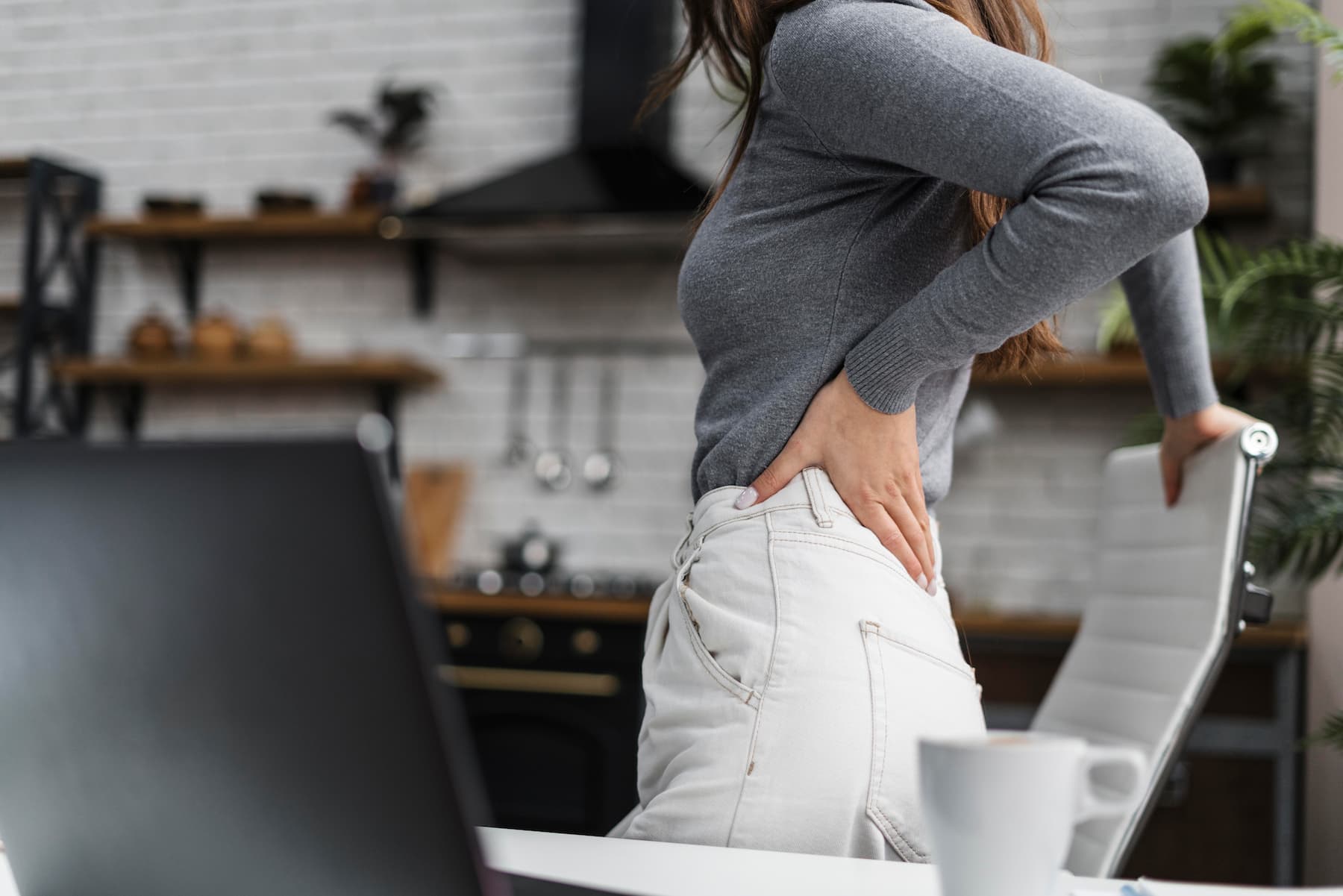
See why hip joints hurt and how to treat their ailments.
